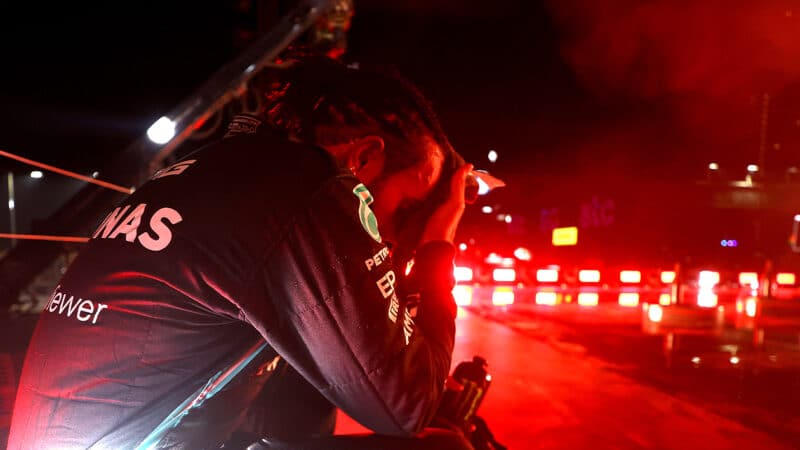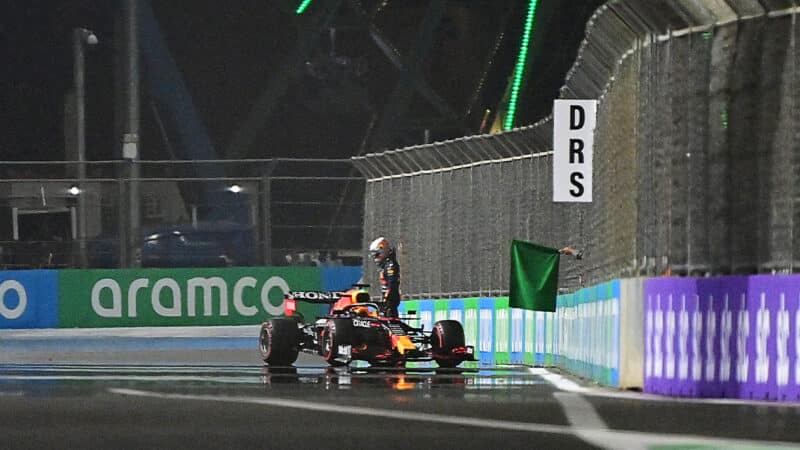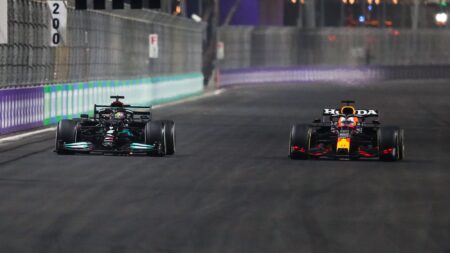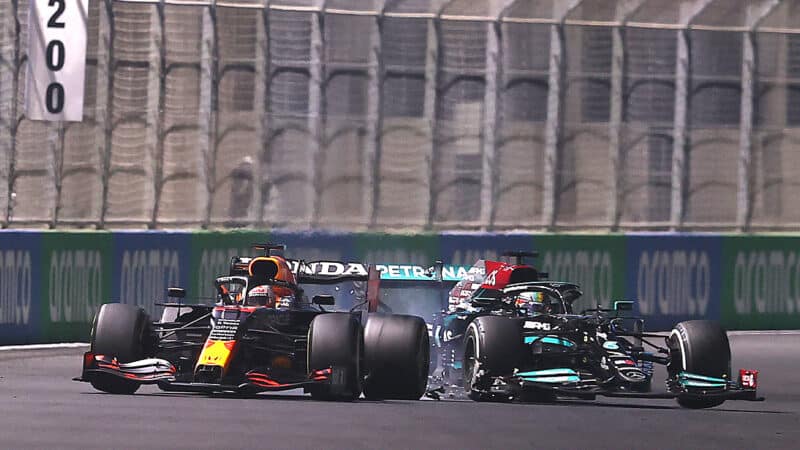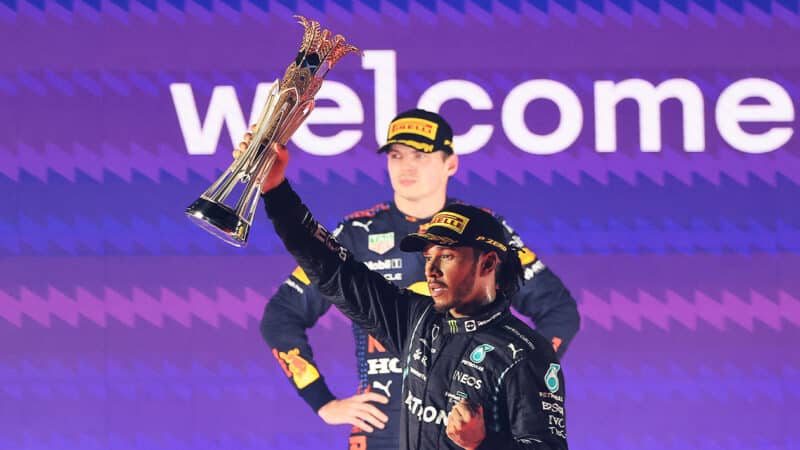As he approached the tight final turn he was 0.3sec faster than Hamilton over the lap. But arriving there just a little faster than ever before, braking at his usual point locked up the inside front and took him wide of the apex. Such was his state of mind, his reaction to this wasn’t to back off to avoid contact with the wall but to belligerently stand hard on the gas in a desperate attempt at power-sliding the required direction change. Which put him hard into the wall. It remains arguably the greatest qualifying lap that never was, up there with Gilles Villeneuve’s Piquet-thwarted effort at Monaco ’79 (when until encountering the dawdling Brabham at the chicane he’d been set for pole by 0.5sec). From dancing on the edge of possible, the hard impact with the wall brought Verstappen down to earth and looking at starting the race from third, behind an all-Mercedes front row.
He took the attitude into the race with him though, and you just knew if he got anywhere close to Hamilton, things were likely to get messy. Eight points down and just two races left, Hamilton had to avoid at all costs any incident. But he also had to avoid being passed by Verstappen. Potentially it was a mentally exhausting task. Verstappen by contrast had to throw everything at Hamilton, totally uncompromising, knowing that if they collided, all the better. In the first stage of the race it looked like Verstappen wasn’t going to get that opportunity as Hamilton led with team-mate Valtteri Bottas watching his back and allowing him to pull away. It was a Mick Schumacher crash which prised the race open for Verstappen. Trying to judge whether this would trigger a safety car or a red flag was impossible. Mercedes brought its drivers in, in the knowledge that Red Bull would do the opposite of whatever they did. Verstappen stayed out. An initial safety car was replaced by a red flag. Meaning Verstappen got his tyre change for free and would take the restart from pole. Game on.
Verstappen swept past Hamilton. The chase was on
Hamilton out-dragged the Red Bull off the line, Verstappen, with his take-no-prisoners approach, simply took to the run-off with all four wheels to take the place back. Hamilton had to lift and steer hard left to avoid contact as Max rejoined, allowing Esteban Ocon’s Alpine to pass the Merc too. There wasn’t time for Verstappen to be ordered to give the place back – as there was immediately another red flag for an accident in the midfield. For the second restart the race director told Red Bull that Verstappen could either be reported to the stewards for gaining advantage by leaving the track – or take the equivalent of giving the place back by starting from third (behind Ocon and Hamilton). They took the latter choice. But fitted him this time with medium tyres rather than the hards everyone else was on, with the aim of out-accelerating the front-row starters. It worked, and Verstappen swept straight past Hamilton into the first turn and edged out Ocon too. Once Hamilton got by the Alpine, the chase was on.

Medium-tyred Verstappen got the jump on Ocon and Hamilton at the second restart
Dan Mullan/Getty Images via Red Bull
Hamilton knew Verstappen’s tyres would surrender before his and that he’d soon be upon him. But then what? How to pass without a collision. This was not going to be straightforward. Here’s how we called it that night.
With the aid of DRS he got ahead on the pit straight – only for Verstappen to again refuse to surrender around the outside run-off, with a big oversteer moment that forced Hamilton off track too, thereby getting the Red Bull back ahead. Again it was judged not a legitimate move and he was ordered to give the place back.
This is where it got really strange. Verstappen decided he’d slow just before the DRS detection point before the final turn, get Hamilton to pass him there so that he’d get DRS on him and slipstream back ahead. Hamilton didn’t want to do that and so delayed passing him. Verstappen tried to further ensure he got his way by braking – at 2.4g. Hamilton clipped the back of the Red Bull but remarkably the front wing was still working.
Verstappen sprinted away, the Red Bull plan now being to anticipate a 5sec penalty by getting more than 5sec lead. But he couldn’t – as Hamilton tracked him. So a second attempt at letting him by was made – at Turn 23. Hamilton came by, Verstappen immediately counter-attacked into 24 to take it back again.
That wasn’t deemed satisfactory and just as the stewards then imposed the 5sec penalty, Hamilton was diving down Verstappen’s inside at the final corner, the decisive move for victory.

